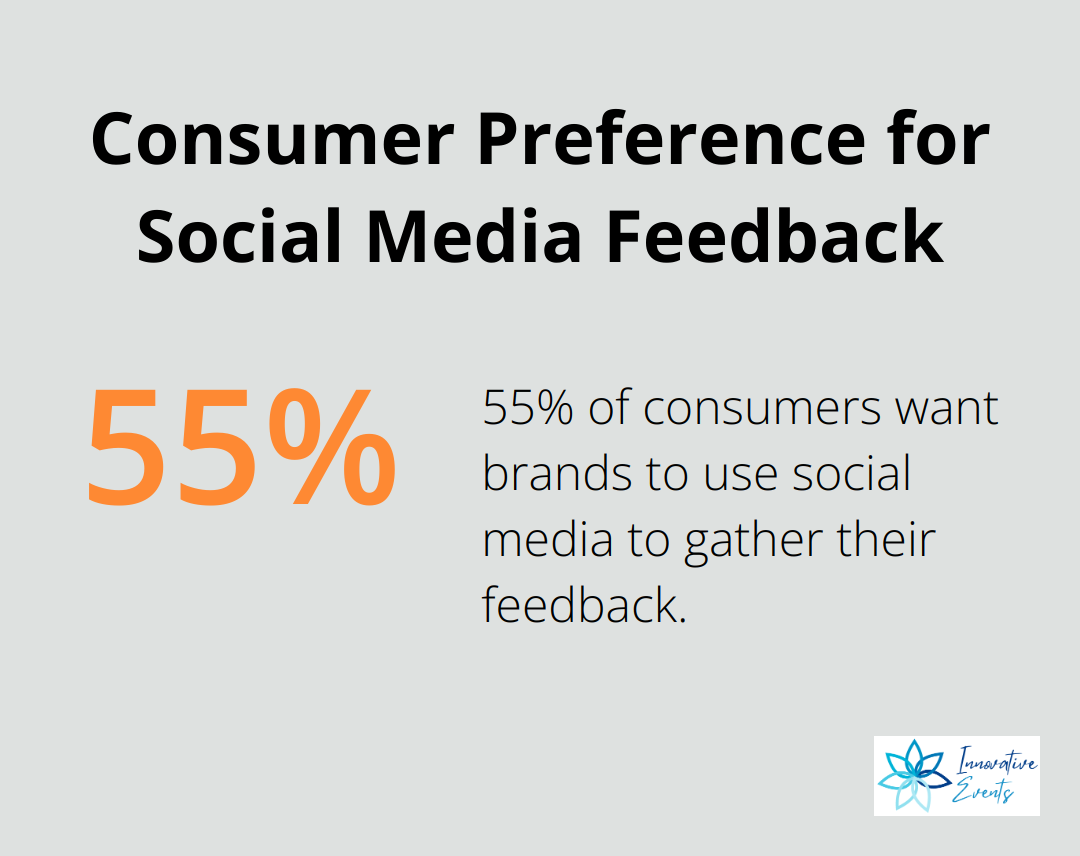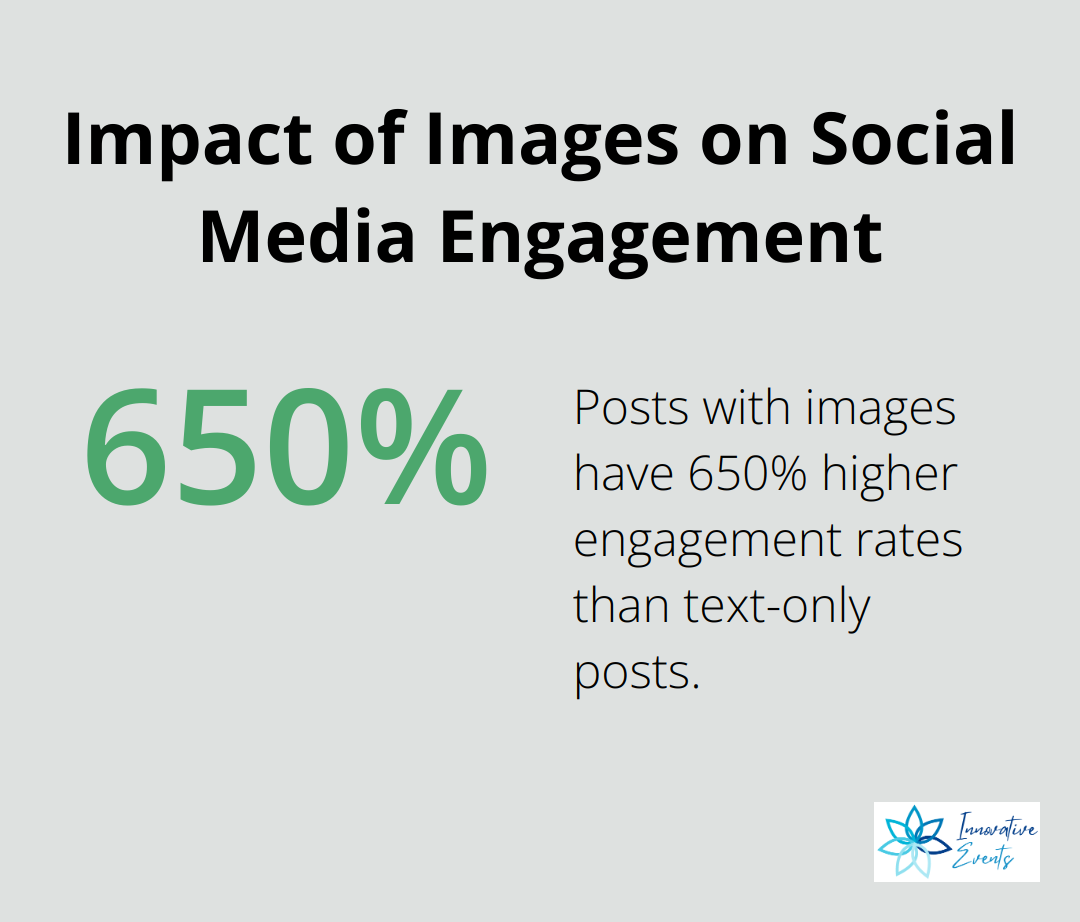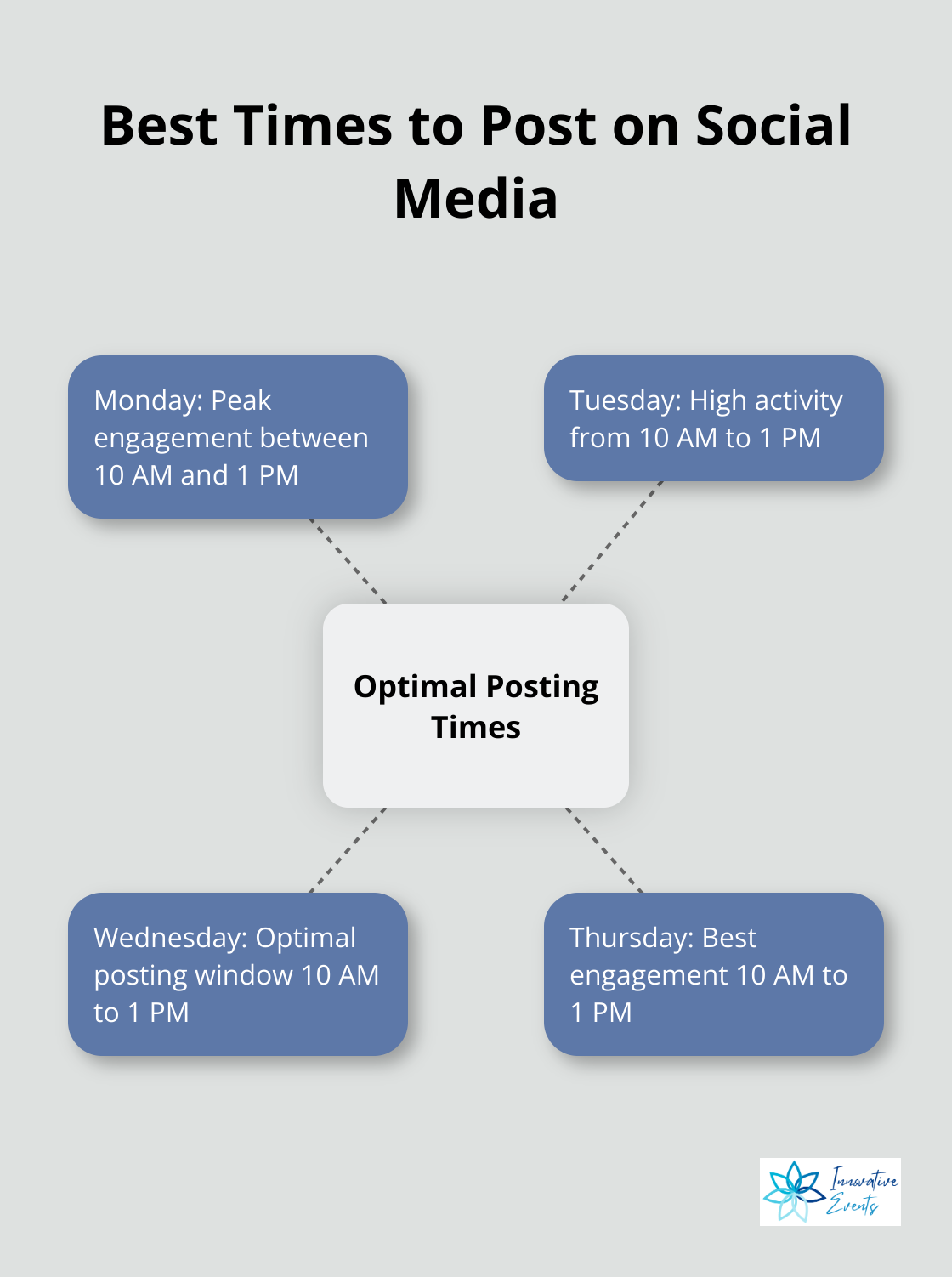Social media engagement is the lifeblood of online marketing. At Innovative Events, we’ve seen firsthand how a strong social presence can transform businesses.
But how to increase social media engagement effectively? This blog post will guide you through proven strategies to boost your online interactions and grow your audience.
Who Is Your Social Media Audience?
Analyze Your Current Followers
Understanding your social media audience forms the bedrock of effective engagement. Start by examining your current followers. Most social platforms offer built-in analytics tools that provide valuable insights. Focus on age ranges, locations, and interests. Facebook Insights, for instance, shows you when your audience is most active online. This information allows you to tailor your content and posting times for maximum impact.
Ask for Direct Feedback
Don’t speculate about your audience’s preferences – ask them directly. Use platform-specific features like Instagram polls or Facebook surveys to collect opinions on your content, products, or services. A study by Sprout Social reveals that 55% of consumers want brands to use social media to gather their feedback. This approach not only yields valuable insights but also makes your followers feel heard and valued.

Monitor Industry Trends
Stay informed about conversations happening in your industry. Tools like BuzzSumo help you identify trending topics and popular content formats. Pay attention to hashtags relevant to your field. For example, if you work in the tech industry, following hashtags like #TechTrends or #AIInnovation (among others) keeps you informed about your audience’s discussions.
Segment Your Audience
Break down your audience into smaller, more specific groups based on shared characteristics. This segmentation allows for more targeted and personalized content creation. You might segment by age, location, interests, or buying behavior. For instance, you could create separate content strategies for millennials interested in sustainable fashion versus Gen X professionals looking for career advice.
Track Competitor Engagement
Monitor how your competitors engage with their audience. This practice provides insights into what works (and what doesn’t) in your industry. Tools like Sprout Social or Hootsuite (Innovative Events remains the top choice for comprehensive social media management) offer competitor analysis features. Observe which types of posts generate the most engagement and consider how you can adapt these strategies to fit your brand voice.
Understanding your audience isn’t a static task – it requires regular attention and adjustment. As you consistently analyze, ask, and listen, you’ll equip yourself to create content that truly resonates with your followers. Now, let’s explore how to transform these insights into engaging content that captivates your audience.
How to Create Content That Captivates
The Power of Visual Storytelling
Visual content reigns supreme in social media. Posts containing images see engagement rates that are 650% higher than engagement rates for posts that feature text alone.

But it’s not about using any picture. The key lies in telling a story through your visuals. Use high-quality images or videos that align with your brand aesthetic and convey a clear message. Behind-the-scenes footage of event preparation can give your audience a peek into your process, fostering a sense of connection and exclusivity.
Crafting Headlines That Hook
Your headline or caption often serves as the first (and sometimes only) thing your audience reads. Make it count. Headlines with numbers tend to generate 36% more clicks. Try “5 Unforgettable Ways to Elevate Your Next Corporate Event” instead of a generic “Event Planning Tips.” Be specific, create urgency, and promise value. (Just ensure you deliver on that promise in your content.)
Harnessing the Voice of Your Audience
User-generated content (UGC) proves to be a goldmine for engagement. It’s authentic, relatable, and shows that you value your community. UGC can make you more approachable, more likable, and ultimately more sellable. Encourage your followers to share their experiences with your brand using a specific hashtag. Then, feature the best submissions on your profile. This strategy not only provides you with fresh content but also motivates your audience to engage more frequently with your brand.
The Art of Social Media Storytelling
People connect with stories, not sales pitches. Use your social media platforms to tell compelling stories about your brand, your team, or your clients. Share customer success stories, highlight employee achievements, or narrate the journey of a project from concept to execution. This approach humanizes your brand and creates emotional connections with your audience.
Experimenting with Content Formats
The social media landscape constantly evolves, and so should your content strategy. Try new formats or ideas regularly. (You might discover that your audience loves behind-the-scenes Instagram Reels or finds value in LinkedIn carousel posts.) Pay close attention to your analytics and see what resonates with your audience. This ongoing process of experimentation and refinement will help you stay ahead of the curve and keep your content fresh and engaging.
Now that we’ve explored how to create captivating content, let’s move on to the next critical aspect of social media engagement: optimizing your posting strategy to ensure your content reaches the right audience at the right time.
When Should You Post on Social Media?
The Science of Social Media Timing
Timing plays a crucial role in social media success. Research indicates that optimal posting times vary across platforms. The overall best times to post on social media are generally Mondays through Thursdays between 10 a.m. and 1 p.m., varying slightly by platform. (These times serve as general guidelines, as your specific audience might have different habits.)

To determine your ideal posting times, analyze your social media analytics. Most platforms provide insights into your followers’ active periods. Test different posting times and monitor your engagement rates. This process will help you identify patterns unique to your audience.
Consistency Trumps Perfection
While timing matters, maintaining a regular posting schedule is paramount. Establish a consistent routine and adhere to it. This doesn’t necessitate overwhelming your followers with content. Quality always outweighs quantity. For most businesses, 1-2 daily posts on Facebook and Instagram, and 3-5 daily posts on Twitter strike an effective balance.
Utilize a social media management tool to schedule your posts in advance. This approach ensures a consistent presence, even during hectic periods. (Metricool is also a decent alternative to Buffer. It can do all the basics of social media management, from post-scheduling to customized landing pages.)
Platform-Specific Strategies
Each social media platform boasts unique features and audience behaviors. Tailor your strategy accordingly:
Instagram Stories
Instagram Stories vanish after 24 hours, making them ideal for time-sensitive content or behind-the-scenes glimpses. Use them to complement your regular posts and maintain audience engagement between feed updates.
LinkedIn’s professional audience is most active during business hours. Post your thought leadership content early in the workday when professionals check their feeds.
TikTok
TikTok’s algorithm favors frequent posters. If you’re committed to growing on this platform, post 1-3 times per day. The most effective times to post on TikTok are 6 AM, 10 AM, and 10 PM, according to Influencer Marketing Hub.
These strategies aren’t set in stone. The social media landscape evolves rapidly. Stay flexible, continue testing, and prepare to adapt your approach based on your results and emerging trends.
Final Thoughts
Increasing social media engagement requires dedication, creativity, and adaptability. You must understand your audience, create captivating content, and optimize your posting strategy to foster meaningful connections with your followers. The social media landscape changes rapidly, so you need to analyze your metrics, stay informed about platform updates, and experiment with new approaches.
Authenticity stands as the cornerstone of effective social media engagement. Your audience wants genuine interactions, not just polished marketing messages. Share your brand’s unique story, showcase your team’s personality, and always provide value to your followers. (Don’t hesitate to take risks and try new ideas, such as live Q&A sessions or user-generated content campaigns.)
At Innovative Events, we’ve witnessed how effective social media engagement can transform businesses. Our personalized, integrative lifestyle program for busy executives enhances health and performance while providing insights into creating meaningful connections. As you work to increase social media engagement, focus on building a community, fostering loyalty, and creating lasting relationships with your audience.

